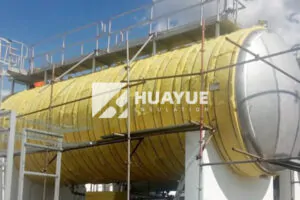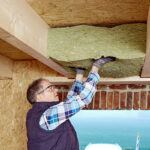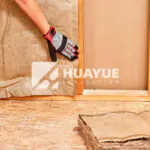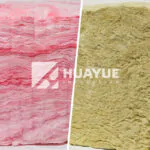Pink Batts Wall Insulation: Is It the Right Choice for Your Project?
Pink Batts insulation solves two big problems—for comfort and cost, it keeps your rooms warmer in winter and cooler in summer.
Pink Batts wall insulation is a popular material made from glass wool, known for its thermal efficiency, fire resistance, and ease of installation. It is often installed in residential and commercial buildings to reduce heat transfer and save energy costs.
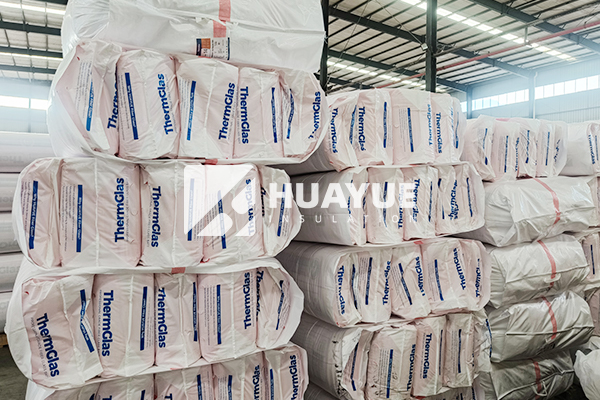
When you look for wall insulation, you want something that lasts, resists fire, and blocks sound. Pink Batts are favored thanks to their price and performance. I have seen many clients, especially in Europe, ask for a balance between quality, safety, and cost. Pink Batts often comes up as a first option. But should you install them everywhere? Or are there better choices? Let’s take each big question one by one.
Do you put pink batts in internal walls?
Keeping a house quiet and comfortable can be hard when sound travels easily between rooms. Homeowners often look for ways to improve privacy and thermal comfort inside.
Installing Pink Batts in internal walls improves both sound reduction and heat retention within separate rooms. While not always a building code requirement, it is often recommended for bedrooms, bathrooms, home offices, and media rooms.

Many clients ask me if they should use insulation inside their homes, not just in the external walls. Pink Batts are made to reduce both heat and sound movement between rooms. In my experience, when you put Pink Batts into internal walls, noise from TV, music, or even loud conversations drops. This makes bedrooms and studies much quieter. They also stop heat from leaking out of a warm room into a cooler one, which saves energy when you heat or cool single rooms instead of the whole house.
Here’s a summary of the key reasons for putting Pink Batts in internal walls:
| Feature | Benefit | Typical Application |
|---|---|---|
| Sound Absorption | Less noise travels between rooms | Bedrooms, studies, bathrooms |
| Thermal Barrier | Limits heat transfer between zones | Heated/cooled spaces |
| Moisture Resistance | Reduces condensation risks | Bathrooms, kitchens |
| Fire Safety | Slows fire spread through walls | Whole interior |
For customers with growing families or multiple home offices, I have seen Pink Batts make a real difference—they make homes feel peaceful and private.
What is the best wall insulation in the UK?
With so many options available, choosing the best insulation product for UK homes can be confusing. Each type has pros and cons based on performance and budget.
The best wall insulation in the UK balances cost, energy savings, fire safety, and ease of installation. Glass wool (like Pink Batts), PIR boards, and rock wool are the top choices because of their proven efficiency and value.

In the UK, cold weather and rising energy prices have pushed both homeowners and builders to seek better wall insulation. Over the years, I have seen three materials stand out: glass wool, rock wool, and PIR foam boards. Glass wool (the material in Pink Batts) leads because it is affordable, easy to install, and fire resistant. Rock wool is better for sound-blocking and even higher fire resistance, but it can cost more. PIR boards have strong thermal properties in thinner sheets but are harder to fit and more expensive.
Let’s compare these top three materials for UK wall insulation:
| Insulation | R-Value (per 100mm) | Fire Rating | Soundproofing | Cost | Common Use |
|---|---|---|---|---|---|
| Glass wool | 2.2 – 2.7 | A1 (non-combustible) | Good | Low | Internal/external walls |
| Rock wool | 2.8 – 3.3 | A1 (non-combustible) | Excellent | Medium | Party walls, flats |
| PIR foam board | 4.0 – 4.7 | B (limited combustibility) | Moderate | High | Renovations, new builds |
In my projects, most UK customers choose glass wool for its balance. High-rises or places needing the best fire safety and sound control might go with rock wool. PIR boards come in if wall space is limited and maximum insulation is needed.
What is the downside of external wall insulation?
Insulating outside walls cuts heat loss, but the installation process often adds cost and complexity. Some homeowners are surprised by long timelines and possible changes to the building’s look.
The main downsides of external wall insulation are higher upfront costs, possible disruption during installation, and potential changes to the appearance of the building. Maintaining wall breathability and moisture control needs special attention.
External wall insulation adds a layer over your outside walls, then covers it with render or cladding. This method prevents cold bridges and keeps heat inside better than letting your walls go bare, but it takes more time and planning. I have seen clients run into issues in the following areas:
| Downside | Why it Matters | Typical Solution |
|---|---|---|
| Higher cost | Labor, scaffolding, finish material add up | Plan budget, seek grants if possible |
| Disruption to occupants | Walls, windows, and pipes may need moving | Agree timeline in detail with contractors |
| Affects appearance | Changes home’s outside look | Choose finishes that match or improve the home |
| Moisture concerns | Wrong install can trap damp | Use certified installers, vent walls correctly |
| Regulations | May need permits or council approval | Check local authority rules first |
My advice is to weigh the long-term energy and comfort savings against the one-off cost and changes. For older brick buildings, this method means saving many kilowatt-hours yearly, but careful installation is critical. Once done well, homes stay warmer, and outside noise drops.
What is the R-value of pink wall insulation?
Choosing the right R-value helps keep your energy bills low. Insulation with higher R-values traps more heat and makes homes more comfortable.
Pink Batts wall insulation typically offers an R-value from R2.0 to R4.0, depending on the thickness and product type. The higher the R-value, the better the thermal performance.
In my factory, Pink Batts products for walls range in thickness from roughly 70mm to 150mm. The R-value rises with the thickness—a standard 90mm Pink Batts slab for walls often rates at about R2.5 to R2.7. For colder places, or buildings that need the best performance, thicker products up to R4.0 are used.
Here’s a guide to typical Pink Batts wall insulation R-values:
| Product/Thickness | R-Value Range | Suitable For |
|---|---|---|
| 70mm | R2.0 – R2.2 | Mild climates/internal |
| 90mm | R2.3 – R2.7 | Standard external walls |
| 140mm | R3.5 – R4.0 | Cold climates or deep frames |
If you are already planning to open up walls, or in a new build, use the thickest insulation that fits. For me, this always pays off in fuel savings and a warmer home for years. Talk to your supplier about what R-value is right for your climate and wall type.
Conclusion
Pink Batts wall insulation offers strong fire resistance, good thermal and sound performance, and a budget-friendly choice, but picking the right product and installation method is key for long-term comfort.
You may also be interested in:
Ready to Get Started?
Get in touch with our experts for personalized solutions tailored to your needs.
Get Free QuoteLatest Articles
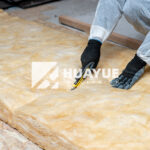
How to Cut Fiberglass Insulation Easily and Safely?
Nov 21, 2025
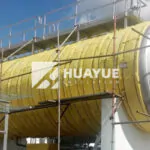
Does fiberglass insulation burn?
Nov 19, 2025
Let's Work Together
Ready to take your business to the next level? Get in touch with our team of experts and let's discuss how we can help you achieve your goals.
Get Free Solutions


